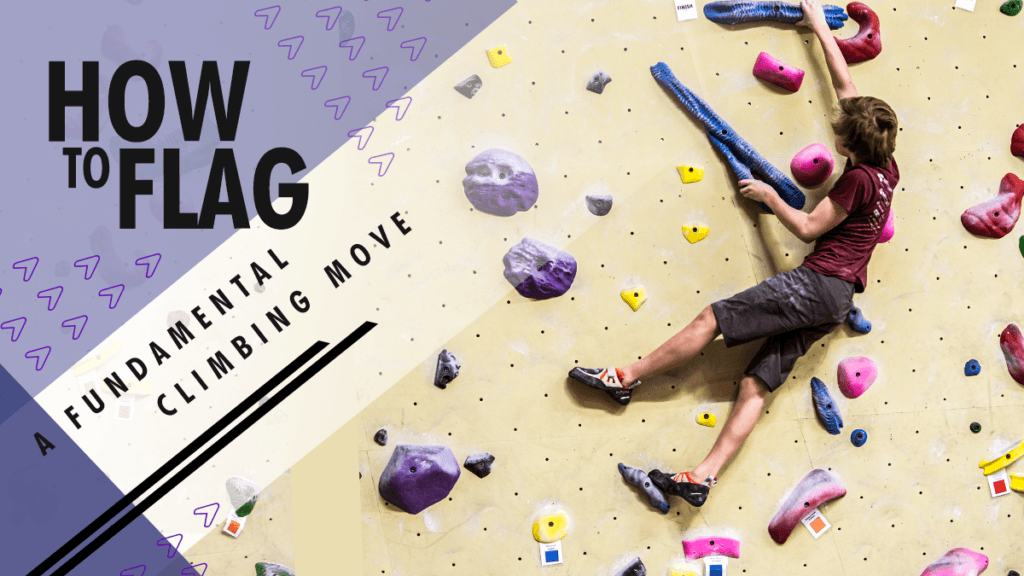How to Flag: A Fundamental Climbing Move

Millions of Americans enjoy rock climbing each year, and the hobby is proven to benefit both your mental and physical health.
Are you new to climbing? Keen to learn techniques that will help you to reach further, climb higher, and maintain energy levels?
Flagging is a great skill for climbing beginners to learn as it’s not too difficult but provides loads of benefits, from better balance to increased energy levels.
Keep reading to learn exactly how to flag.
What is Flagging?
Flagging is the process of extending one leg out to the side to maintain your center of gravity and reach further to grab holds that are off to the side.
Essentially, your free-hanging foot works as a counterbalance, allowing you to reach further without problems.
It’s a helpful technique if you want to avoid using too much energy to reach side holds. It also helps if you often find yourself coming off the wall when you reach too far to one side.
There are three main types of flagging, and we’ve explained them below.
Normal Flagging
Normal flagging, also known as side flagging, involves reaching the flagging foot out on the same side of the body. For example, reaching your left foot out to the left.
It’s commonly used when you have one hand on the wall along with the opposite foot. For example, left hand and right foot on the wall, left foot reached out as the ‘flagging’ foot.
This is the type of flag that’s likely to feel most natural and intuitive. You might already have used this technique without realizing it had a name.
Reverse Outside Flagging
Reverse outside flagging, or rear flagging, involves crossing your foot over behind your other leg. For example, reaching your left foot behind your right leg.
This can feel awkward, but it’s helpful if you need to reach a hold on the same side as the foot you’re moving.
This is used when one hand and one foot from the same side are holding the wall. For example, right hand and right foot on the wall, left foot used for flagging.
This sounds more complicated than it is and will quickly come to feel natural once you’re on the wall.
Reverse Inside Flagging
Reverse inside flagging is similar to the above, but you’ll be crossing your flagging foot in front of your other leg, rather than behind. This allows you to reach holds on the same side as the flagging foot.
It’s useful on overhang climbs where there might be more room in front of your legs than behind. It can also be handy if your body is turned away from the wall at an angle.
You won’t use this technique as often as the others, but it’s a good one to learn.
Why Learn How to Flag?
Learning how to flag is essential if you want to reach holds off to the side without losing balance or falling off the wall. It helps you to maintain a good center of gravity and reduces the energy it takes to reach tricky holds.
Keen to get back on the wall? Check out our store for climbing shoes and accessories.




